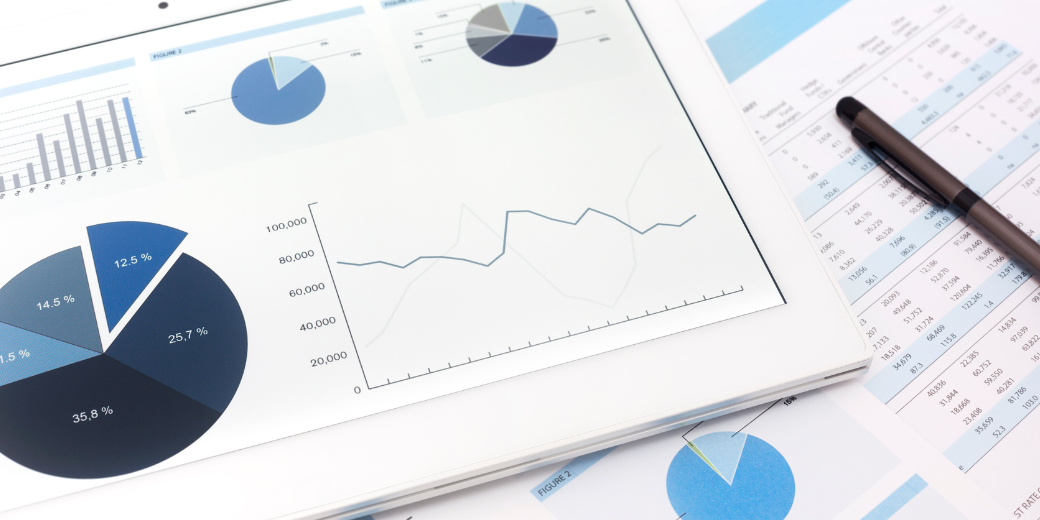Resource Center
The Guide to Company Profiling in Market Research

Summary
Master company profiling to drive success in investment, consulting, and strategic planning with our comprehensive guide.
What is Company Profiling?
Company profiling is an in-depth research process that examines various aspects of a business to gain a comprehensive understanding of its operations, performance, and strategic positioning. It involves collecting and analysing data on a company’s activities, financial health, market presence, competitive landscape, organisational structure, and more. The primary goal is to provide stakeholders with a detailed picture of the company’s strengths, weaknesses, opportunities, and threats.
Company Profiling as a Versatile Tool for Multiple Professional Fields
In today’s dynamic business environment, company profiling has emerged as an indispensable tool that provides a strategic advantage across various fields. Whether it’s for investment, benchmarking, market research, or strategic planning, company profiling offers a thorough analysis that can significantly influence decision-making processes. Here’s how harnessing the power of company profiling can drive success in multiple areas:
Achieving Comprehensive Due Diligence:
Company profiling enables firms to conduct thorough due diligence by providing detailed insights into a company’s financial performance, operational efficiency, market position, and potential risks. This is crucial for consulting firms assessing client operations, tax advisory services verifying compliance and financial integrity, and government agencies evaluating regulatory adherence.
Securing Accurate Valuation:
For investment and strategic planning purposes, accurate valuation of a company is essential. Company profiling offers detailed financial data, including historical performance, revenue streams, profit margins, and asset valuations. This helps investors, consultants, and strategic planners determine the true value of a company, making informed decisions and securing beneficial outcomes.
Identifying and Leveraging Synergies:
Understanding a company’s business model, market presence, and operational strengths allows firms to identify potential synergies. Company profiling highlights areas where operations can be integrated, resources combined, and overall efficiency enhanced. This is particularly relevant for consulting firms and PE firms seeking to optimize client operations and investments.
Mitigating Risks Effectively:
Company profiling helps identify risks early in the process by understanding a company’s organizational structure, corporate culture, and potential liabilities. This is essential for strategic planners, tax advisors, and government agencies to develop strategies that mitigate these risks and ensure smoother operations, compliance, and policy implementation.
Facilitating Strategic Planning:
Company profiling provides valuable insights that aid in strategic planning. It helps firms understand a company’s market position, competitive landscape, and growth potential. This information is crucial for developing effective strategies, setting realistic expectations, and aligning initiatives with overall goals in consulting, government planning, and tax advisory.
Enhancing Benchmarking Practices:
Benchmarking is vital in tax advisory and consulting to evaluate a company’s performance against industry standards. Company profiling offers detailed comparative data, allowing firms to identify strengths, weaknesses, and areas for improvement. This helps in setting benchmarks and developing strategies to achieve best-in-class performance.
Strengthening Negotiation Positions:
Having a comprehensive profile of a company strengthens a firm’s position during negotiations. It equips them with detailed information to justify their offers, counter any claims made by the other party, and address concerns raised by stakeholders. This leads to more balanced and informed negotiations, increasing the chances of successful outcomes in various professional engagements.
Key Elements to Implement Effective Company Profiling
To effectively utilise company profiling across various fields, it’s essential to focus on several key elements. These elements ensure the accuracy, depth, and relevance of the profiling process, leading to actionable insights. Here are the crucial components that drive successful company profiling:
1. Ensuring Comprehensive Data Collection
The foundation of any profiling exercise is the collection of accurate and up-to-date data. Key data sources include:
- Company Websites and Publications: Primary information about a company’s history, mission, product offerings, and strategic objectives.
- LinkedIn Profiles: Insights into the company’s executive team, partners, and achievements.
- News Articles and Press Releases: Current information on company developments, achievements, product launches, and organisational changes.
- Financial Statements: Detailed records of financial performance, including annual reports and investor presentations.
- Premium Databases: Access to extensive and reliable business data, including M&A deals and market trends.
2. Utilising Advanced Analytical Skills
Data analysis is pivotal to deriving meaningful insights from collected information. Essential analytical skills include:
- Research Skills: Employing various research techniques to extract relevant data efficiently.
- Data Analysis: Identifying patterns and gaps, and refining research strategies to ensure comprehensive answers to research questions.
3. Applying In-Depth Industry Knowledge
Understanding the specific industry in which the company operates is crucial. This includes knowledge of:
- Sector Dynamics: Key players, market trends, and regulatory environment.
- Competitive Landscape: Strategies, market share, and performance of competitors.
- Industry Reports: Detailed industry overviews and trend analysis to contextualise findings.
4. Demonstrating Technical Proficiency
Proficiency in using various research tools and databases is essential. This includes:
- Advanced Search Filters: For detailed data retrieval, particularly in M&A and financial analysis.
- Data Visualisation Tools: To interpret and present findings effectively.
5. Delivering Effective Communication
Communicating findings clearly and concisely to different stakeholders is vital. This involves:
- Report Writing: Preparing detailed and well-structured reports tailored to the audience’s needs.
- Presentation Skills: Presenting findings to stakeholders, ensuring clarity and relevance.
- Adaptability: Adjusting communication styles to suit different contexts and audiences.
Below is an example of a company profile from the business intelligence platform “Speeda,” which allows users to quickly collect data such as company descriptions, shareholding information, financial and M&A data, related news, and more. A profile like this consolidates resources from scattered and unstandardised data sources into a single platform, saving time and effort.

Financial Metrics to Focus on When Profiling Companies
Profiling companies involves a thorough examination of various financial metrics to gain insights into their economic health, operational efficiency, and overall performance. Key financial metrics to focus on include:
1. Revenue and Revenue Growth
- Revenue: The total income generated by the company from its business activities.
- Revenue Growth: This metric helps in understanding the company’s market demand and business expansion capabilities.
2. Profitability Metrics
- Gross Profit Margin: The difference between revenue and the cost of goods sold (COGS), divided by revenue. It indicates the efficiency of production and pricing strategies.
- Operating Profit Margin: The ratio of operating income to revenue. It shows how well the company manages its operating expenses.
- Net Profit Margin: The ratio of net income to revenue. It reflects the overall profitability after all expenses, taxes, and interest have been deducted.
- Earnings Before Interest, Taxes, Depreciation, and Amortisation (EBITDA): A measure of a company’s overall financial performance and profitability from core operations.
3. Liquidity Ratios
- Current Ratio: The ratio of current assets to current liabilities. It indicates the company’s ability to cover short-term obligations.
- Quick Ratio: The ratio of liquid assets (excluding inventory) to current liabilities. It provides a more stringent assessment of liquidity than the current ratio.
4. Solvency Ratios
- Debt-to-Equity Ratio: The ratio of total debt to shareholders’ equity. It measures the company’s financial leverage and risk.
- Interest Coverage Ratio: The ratio of operating income to interest expenses. It shows the company’s ability to meet interest payments on its debt.
5. Efficiency Ratios
- Inventory Turnover Ratio: The ratio of cost of goods sold to average inventory. It indicates how efficiently the company manages its inventory.
- Receivables Turnover Ratio: The ratio of net credit sales to average accounts receivable. It measures how effectively the company collects receivables.
6. Return Ratios
- Return on Assets (ROA): The ratio of net income to total assets. It shows how efficiently the company uses its assets to generate profit.
- Return on Equity (ROE): The ratio of net income to shareholders’ equity. It measures the return on investment for the company’s shareholders.
7. Cash Flow Metrics
- Operating Cash Flow: Cash generated from the company’s core business operations. It indicates the company’s ability to generate sufficient cash to maintain and grow operations.
- Free Cash Flow: Operating cash flow minus capital expenditures. It represents the cash available for distribution to shareholders, debt repayment, or reinvestment in the business.
Leveraging Competitive Intelligence with Technology in Company Profiling
Capitalising competitive intelligence is key for gaining a strategic edge. Competitive intelligence involves gathering, analysing, and utilising information about competitors, market trends, and industry dynamics to make informed business decisions. Incorporating technology and data analytics into this process significantly enhances the accuracy and efficiency of company profiling. Here’s how:
1. Use Web Scarping, APIs for Advanced Data Collection
Technology enables the collection of vast amounts of data from various sources quickly and accurately. Tools and platforms like web scraping, APIs, and big data technologies can gather real-time data from:
- Competitor Websites and Social Media: Monitoring updates, customer interactions, and marketing strategies.
- Financial Databases: Accessing detailed financial reports, historical performance, and market forecasts.
- News and Media Outlets: Keeping track of industry developments, regulatory changes, and significant events.
2. Ensuring Effective Data Integration and Management
Effective competitive intelligence requires integrating data from multiple sources to create a comprehensive profile. Utilising data analytics platforms, businesses can:
- Aggregate Data: Combine data from various sources into a central repository for easy access and analysis.
- Ensure Data Quality: Use tools to clean, normalise, and validate data, ensuring accuracy and consistency.
- Update in Real-Time: Implement automated systems to keep data current and relevant, providing up-to-date insights.
3. Applies Advanced Analytics to Generate Actionable Insights
Data analytics plays a critical role in transforming raw data into actionable insights. By leveraging advanced analytics techniques, businesses can:
- Identify Trends and Patterns: Use statistical and machine learning models to uncover trends in market behaviour, competitor performance, and customer preferences.
- Predictive Analytics: Forecast future market movements and competitor actions based on historical data and predictive modelling.
- Benchmarking: Compare performance metrics against industry standards and key competitors to identify strengths and weaknesses.
4. Visualisation Tools to Spot Patterns and Trends
Data visualisation tools are essential for interpreting complex data sets and presenting insights clearly. Tools like Tableau, Power BI, and custom dashboards allow businesses to:
- Create Interactive Dashboards: Provide stakeholders with intuitive visualisations that can be customised to focus on specific metrics and trends.
- Generate Reports: Develop comprehensive reports with visual aids to support strategic decision-making and presentations.
- Monitor Key Metrics: Track critical performance indicators in real-time through dynamic visualisations.
5. Automation and Artificial Intelligence to Streamline Processes
Automation and AI technologies streamline the competitive intelligence process, making it more efficient and reducing the likelihood of human error. Key applications include:
- Automated Data Collection: Use bots and scripts to continuously gather data from selected sources without manual intervention.
- Natural Language Processing (NLP): Analyse text data from news articles, reports, and social media to extract relevant information and sentiments.
- AI-Driven Insights: Employ AI algorithms to identify hidden patterns and generate insights that may not be apparent through traditional analysis.
Leveraging Technology and Data Analytics to Streamline Your Workflow
Incorporating technology and data analytics into your company profiling process can significantly enhance the efficiency, accuracy, and relevance of your work. Utilising solutions like data platforms not only streamlines data collection but also provides advanced analytical capabilities. Here’s how leveraging technology and data analytics can transform your company profiling efforts:
1. Enabling Enhanced Decision-Making
Integrating competitive intelligence with advanced analytics provides a more accurate and comprehensive understanding of the competitive landscape, enabling better strategic decisions.
2. Achieving Increased Efficiency
Automated data collection and analysis save time and resources, allowing businesses to focus on interpreting insights and developing strategies rather than on manual data processing.
3. Gaining Up-to-Date Insights
Real-time data integration ensures that businesses have access to the latest information, making their competitive intelligence more relevant and actionable.
4. Ensuring Improved Accuracy
Advanced analytics and AI technologies enhance the accuracy of insights by reducing human error and applying sophisticated models to analyse data.
Adopting technology and data analytics can streamline your company profiling process, making it more efficient and accurate. Speeda, with its advanced data gathering capabilities, can be a key solution in this transformation. If you’re interested in learning how Speeda can streamline your research workflow, including company profiling, schedule a free consultation with our Speeda team today. Let us help you harness the power of technology to enhance your work.



























